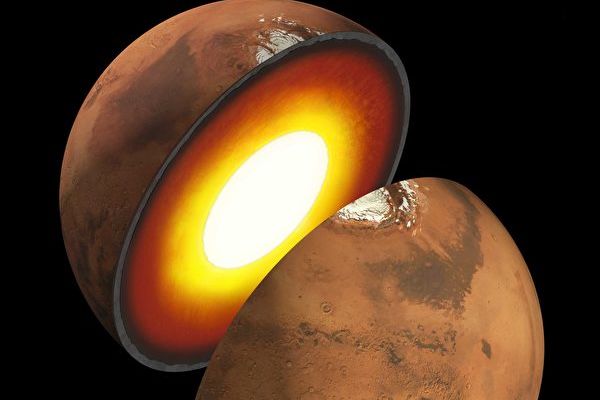New research by scientists has shown that apart from the frozen water at the Mars’ poles, there is a significant amount of liquid water deep beneath the surface of the planet. This discovery holds great significance for scientists in further exploring the habitability of the red planet and the search for extraterrestrial life.
The findings are based on a new analysis of data collected by NASA’s Mars Insight Lander from 2018 to 2022. The study was led by Vashan Wright, a geophysicist at the Scripps Institution of Oceanography at the University of California, San Diego.
During its mission, the Mars Insight Lander recorded over 1,319 earthquakes. By measuring the propagation speed of seismic waves, scientists were able to determine the most likely substance that the waves passed through.
The research results were published on Monday, August 12, in the Proceedings of the National Academy of Sciences.
For years, scientists have been searching for signs of existing liquid water on Mars, as water is crucial for a planet’s habitability. Although Mars is currently cold and dry, researchers suggest that billions of years ago, it was a warmer and wetter place. The report led by Wright indicates that there was a significant amount of liquid water on the surface of Mars over three billion years ago.
According to a press release from the Scripps Institution of Oceanography regarding this research, Wright, the lead of the research team, stated, “Understanding the water cycle on Mars is crucial for understanding the climate, surface, and internal evolution. A useful starting point is to determine where the water is and how much there is.”
The amount of liquid water discovered by the institute’s research team is enormous. They estimate that if the area beneath the Mars Insight Lander is representative, the amount of liquid water in the Martian crust could be greater than the assumed volume of water in the ancient Martian oceans.
Exploring the underground water on Mars poses challenges for future astronauts seeking to obtain samples, as the underground water is located 7 to 12 miles (11.5 to 20 kilometers) below the Martian surface.
The research team utilized geophysical measurements to identify deep underground water. By analyzing seismic wave speeds from the Mars Insight Lander’s measurements of ground motion and using rock physics models to interpret the data.
The study report states that during the Noachian and Hesperian periods over three billion years ago, Mars not only had rivers, lakes, and aquifers but also oceans with at least some liquid water. However, Mars lost most of its atmosphere during this period, losing the ability to sustain liquid water on its surface. Ancient surface water may have escaped into space, while some may have been trapped in minerals, buried in ice, or sealed in deep aquifers. The new study found a significant amount of liquid water in the mid-crust region of Mars.
Scientists are still uncertain why Mars lost its atmosphere. To understand the history of water on Mars, its whereabouts, and whether suitable conditions for life were once created on the planet, scientists have undertaken multiple missions.
According to CNN, Micheal Manga, a professor of Earth and Planetary Science at the University of California, Berkeley and a co-author of the research report, stated, “The team identified a huge liquid water reservoir, providing a window into the climate or potential climate at that time.”
“As is well known, water is essential for life. I see no reason why a subsurface water reservoir wouldn’t be a habitable environment,” Manga added. “On Earth, very deep mines harbor life, and the ocean floor harbors life. We have not found evidence of life on Mars yet, but at least we have found a place that in principle could support life.”
The report concludes that the new research results are significant for understanding Mars’ water cycle, determining the fate of past surface water, searching for past or present life, and future Mars exploration missions.

